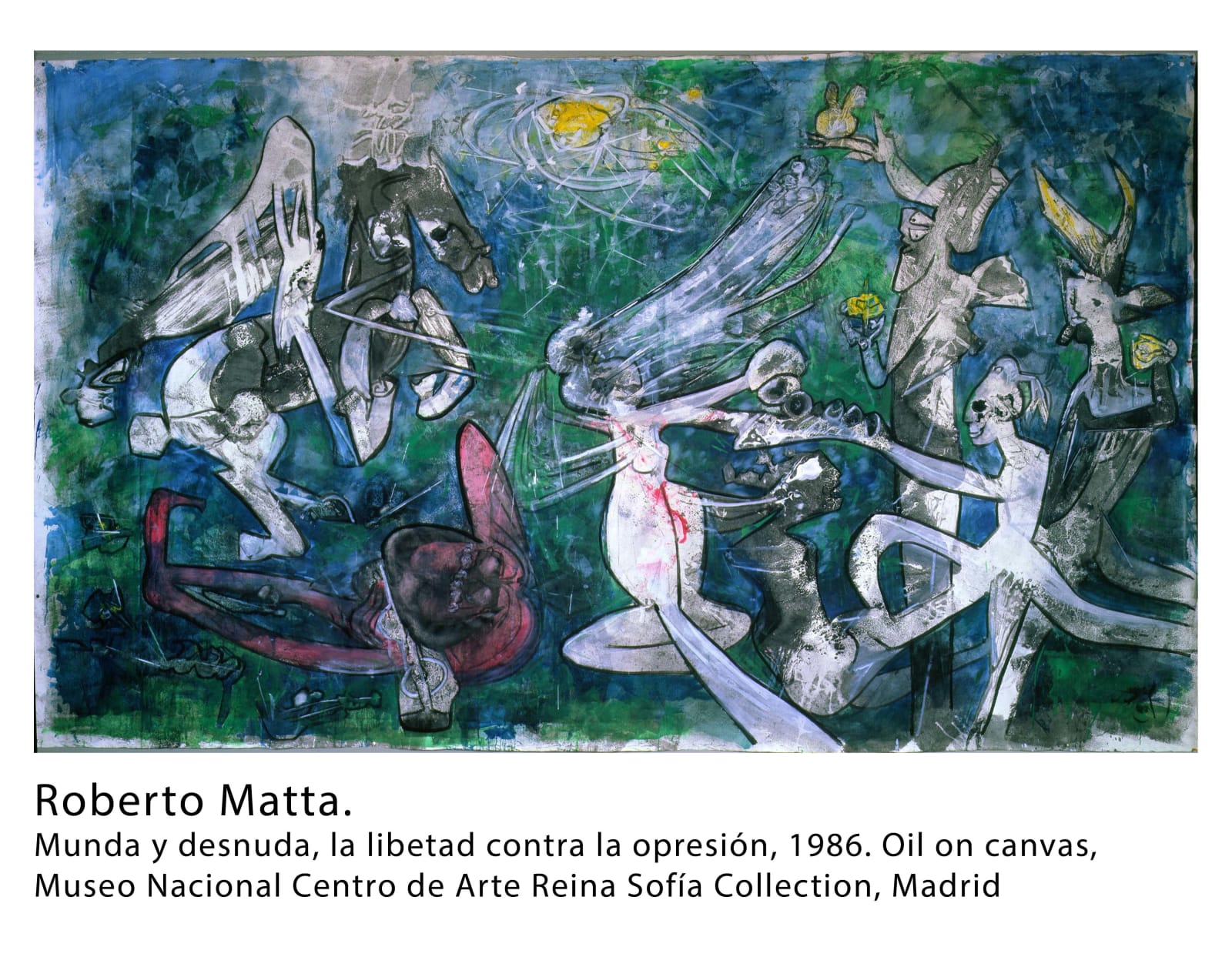Chancay Culture 1000-1470
26,3 x 84,6 in
Frame size:
97 x 228 cm
Further images
Within this masterpiece of a painted Pre-Columbian textile, attributed to the Chancay culture of coastal Peru, we discern striking anthropomorphic forms—male and female figures positioned symmetrically on either side of a central axis. At the heart of the composition lies a prominent vaginal form, stylised through an arrangement of fish or snake heads, suggesting a visual metaphor for birth, life, and creative power. This configuration appears to celebrate fecundity, vitality, and the regenerative forces of nature, themes deeply embedded in Andean cosmology.
Chancay painted textiles are renowned for their dynamic graphic language and their unique use of metamorphic figures—beings that combine human and animal traits or shift fluidly between forms. These transformations are not merely decorative but reflect a broader worldview in which boundaries between species, genders, and spiritual states are porous and interconnected. The painted figures are often composed of modular, repeated elements, yet no two are exactly alike, reflecting a conscious desire for individualisation and thematic variation.
Roberto Matta’s homage to his South American roots has been well-known and documented since 1932. Less recognized, however, is his deep immersion in and connection to Pre-Columbian Andean textiles. Before traveling to Europe, he discovered his Pre-Columbian Andean Chilean ancestry—an experience that left a profound impression on him during childhood, particularly through the textile cultures of the Atacama and the Azapa Valley in Arica.
While Matta followed a deeply personal artistic path, he also reflected a broader movement away from Eurocentric perspectives in search of an “other”—a spiritual connection often found in the traditions of Native American First Nations. This pursuit of indigenous spiritualities was not exclusive to North American artists, who only began exploring it in the 1940s. As Mike Kelley observed, “Taos, New Mexico became a mecca for artists [in the 1920s],” a time when figures like André Breton, Paul Éluard, and Enrico Donati were already collecting Hopi Kachina dolls, totemic Pre-Columbian objects, and Andean textiles.









